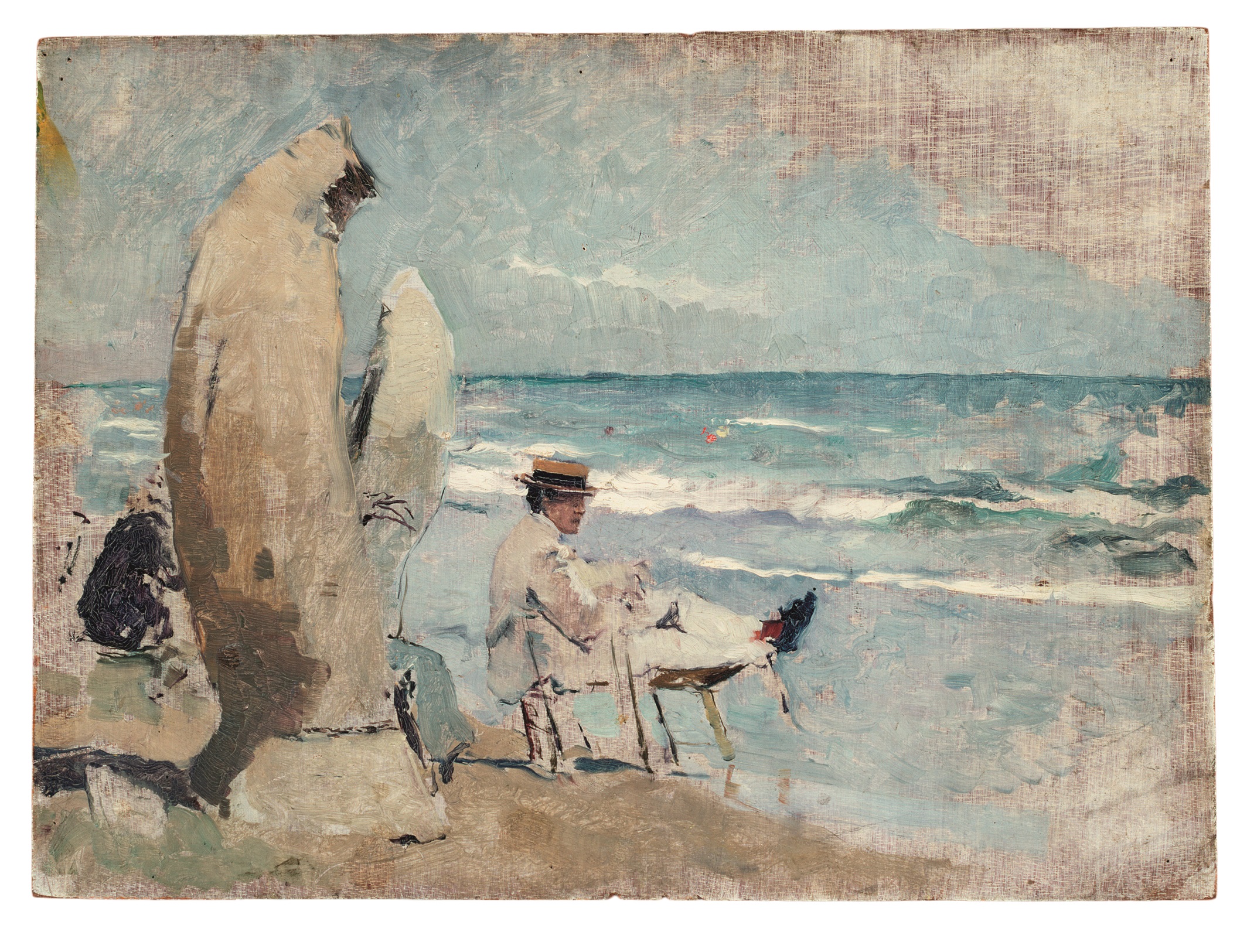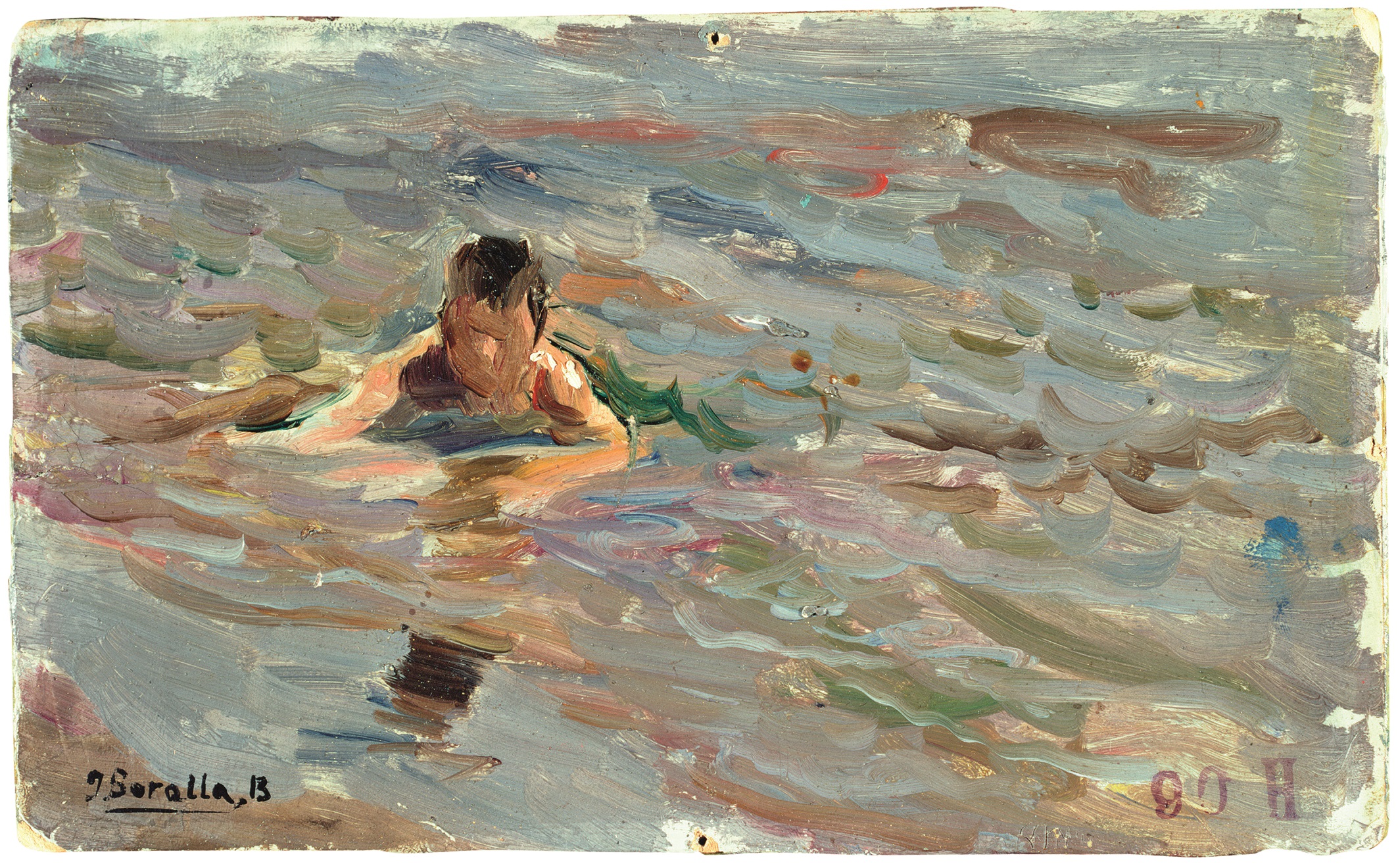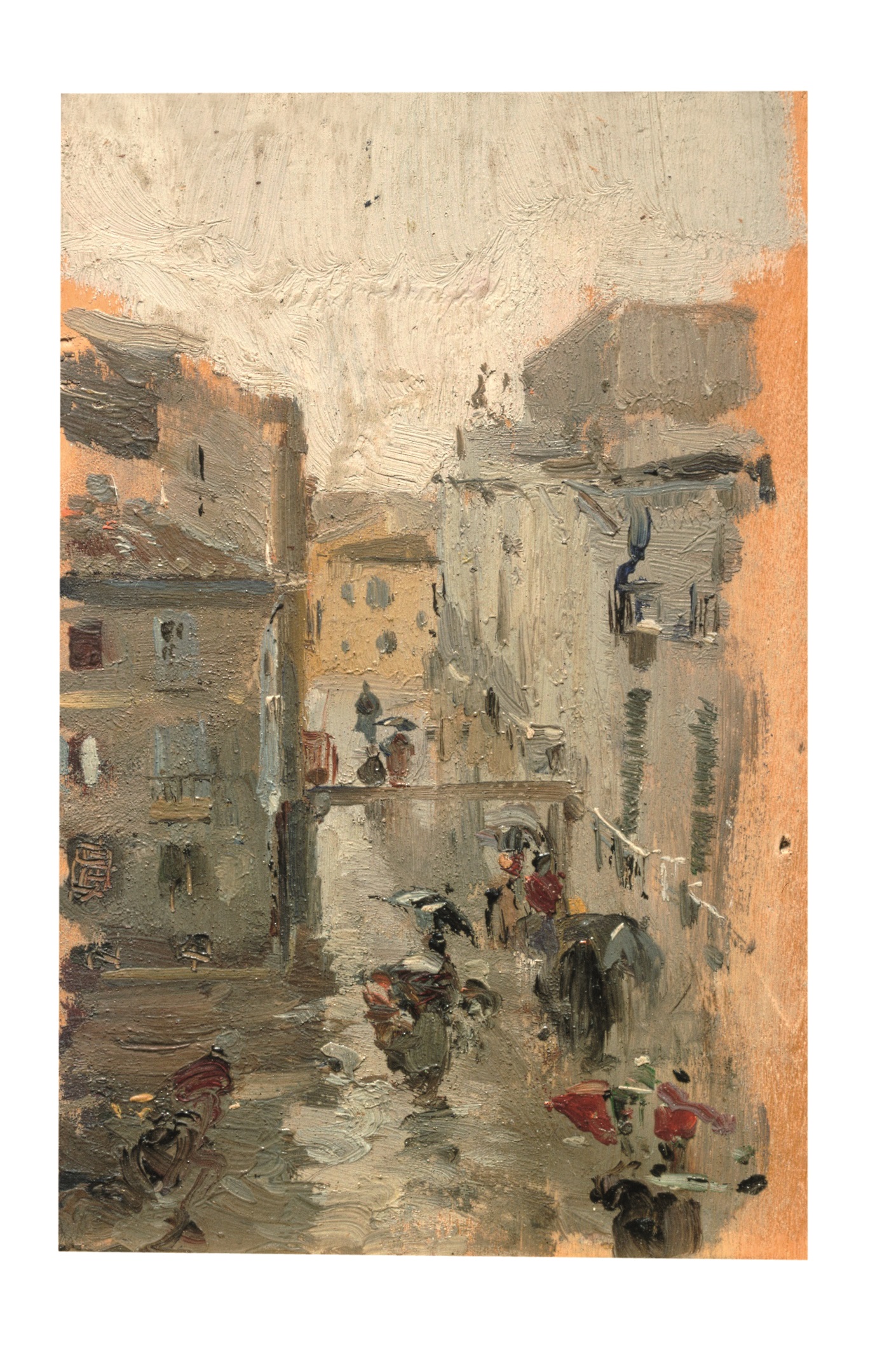Joaquin Sorolla, San Sebastián beach1900-1901, Oil on panel, Sorolla Museum
The views of teeming Italian cities cross the intimate atmosphere of the cafés between Rome and Paris, the landscape, the various monuments of the beautiful country, to emphasize Joaquín Sorolla’s ties with the peninsula.
So on its first day of spring Rome meets the colors of the Spanish master for the first time. Until June 11, the Real Academia de España in Rome hosts the first exhibition in the capital entirely dedicated to the Valencian painter, acclaimed, at the beginning of the twentieth century, as “the greatest living painter in the world.
Joaquín Sorolla, A road in Italy, 1885, Olio su tavola, Sorolla Museum Foundation
A hundred years after the death of the artist who dipped his vibrant brushes in the summer light and in the sea of Valencia, among the water features in the gardens of the Alhambra in Granada, in the sunny Mediterranean atmosphere, Rome welcomes the Joaquín Sorolla, flashes of light and colour, an occasion to also celebrate the 150th anniversary of the Academy. But above all to remember the occasions in which the painter of light was in Italy and in Rome, a city that he got to know between 1885 and 1889, subsidized by the Diputación de Valencia.
Organized by Academia de España in Rome, Museo Sorolla and Fundación Museo Sorolla, Acción Cultural Española (AC/E), the exhibition, curated by Blanca Pons-Sorolla and María López Fernández, after stops in Madrid, Valencia, Bilbao, Barcelona, arrives in the capital with a section specifically designed for the Academy. Of the more than 240 original works on display, 205 are oil paintings that Sorolla called “spots” or “notes of colour”, conserved in the Sorolla Museum in Madrid.

Joaquín Sorolla, Beach of Valencia, 1904, Oil on white primer, Museo Sorolla
In the course of his life, the painter came to paint about two thousand oil paintings on very small cartoons or tablets, which he generally defined as “notes”, but which he sometimes called “spots” or “color notes”. These were tablets which could be transported, together with brushes and tubes of colour, in specially constructed boxes, making it easier to paint in the open air. If at first they were considered intimate works, they soon won over the public for their creative freedom, as well as for the germ of possible new works, and began to be exhibited and admired as representative of the artist’s more personal and original sphere.
Sorolla often used them as a mere exercise, or sometimes in correlation with ideas for his compositions. Usually with these stains he used to cover entire walls of the study, hanging them with pins, even if he soon he began to frame them. Small in size, but big in audacity, these paintings express the spirit of his painting.

Joaquín Sorolla, Child at the Sea, 1905, Oil on cardboard, Museo Sorolla
The development of the painter’s career began, at the Real Academia de España, in the three rooms on the ground floor with the exhibition at the Georges Petit Gallery in Paris in 1906, followed by a focus on artistic maturity, between 1904 and 1911. Between 1909 and 1911 the American exhibitions arrive, while the culmination of his production occurs between 1912 and 1919.
On the first floor, the Salone dei Ritratti guides the public through the section designed for this Roman occasion, entitled Sorolla, the Royal Academy of Spain in Rome and the origin of the piccolo format. The series of “notes” painted in various places in Italy highlight the painter’s links with the peninsula through five subjects: views of Italian cities, artists’ studios, travel and the atmosphere of cafés between Rome and Paris , the representation of the monuments, the composition of the landscape.
The exhibition, with free admission, can be visited from Tuesday to Sunday, from 10 to 18 (last admission at 17.30).
![]() Read also:
Read also:
• Joaquín Sorolla, flashes of light and colour
• One hundred years without Joaquín Sorolla. The events not to be missed in Spain
